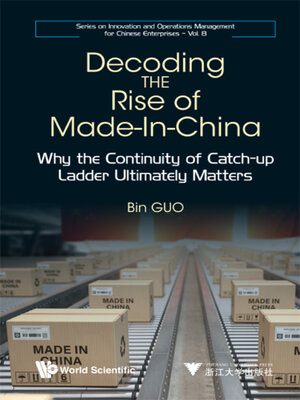Decoding the Rise of Made-in-China
ebook ∣ Why The Continuity Of Catch-up Ladder Ultimately Matters · Series On Innovation and Operations Management For Chinese Enterprises
By Bin Guo

Sign up to save your library
With an OverDrive account, you can save your favorite libraries for at-a-glance information about availability. Find out more about OverDrive accounts.
Find this title in Libby, the library reading app by OverDrive.



Search for a digital library with this title
Title found at these libraries:
| Library Name | Distance |
|---|---|
| Loading... |
This book provides a novel theoretical framework to explain the real source of competitive advantage of Chinese manufacturing. More importantly, such a framework can be generalized to analyze the potential of catch-up for large emerging economies in the globalization era. The book also provides insights for policy makers to rethink their design of policies.The rise of Made-in-China products has been widely attributed to low labour cost advantage and imitation advantage. However, as these two advantages are nearly innate to all late-developing countries, they cannot be regarded as the key factors that drive the rapid growth of China's manufacturing industry, or China's economy, over the past few decades. In this book, the author proposed a theory — 'the catch-up ladders theory', to explain the rise of China's manufacturing industry. The manufacturing advancement of any country is in essence a process of catching-up in both market and technology, during which enterprises will form a ladder-like holistic structure due to their differences in capabilities, technology and market positioning. In light of this, the continuity of the catch-up ladder will greatly determine the catch-up efficiency of an industry and even a country at large. Such a perspective is more applicable to large emerging economies, especially those with over one hundred million population and thus huge potential domestic market demand.







